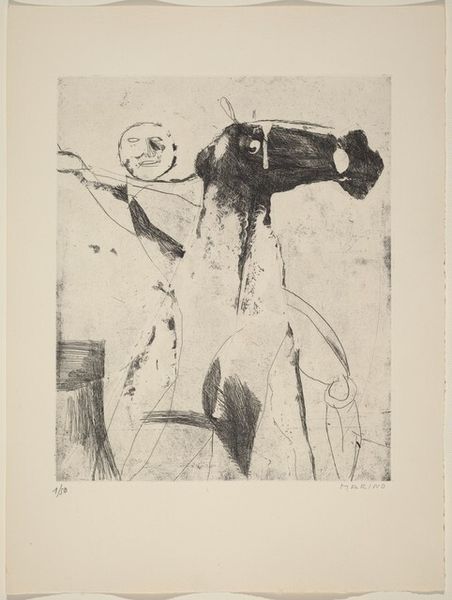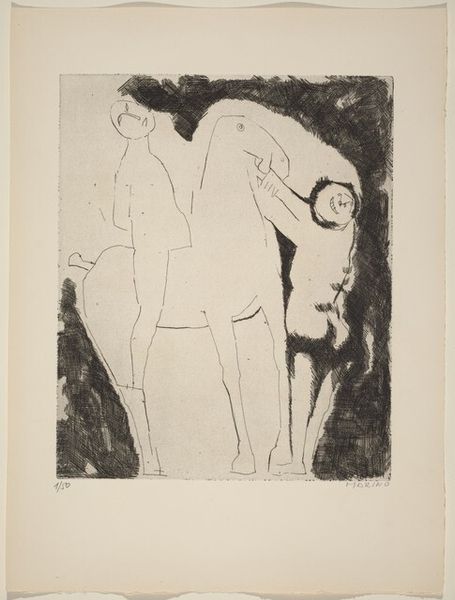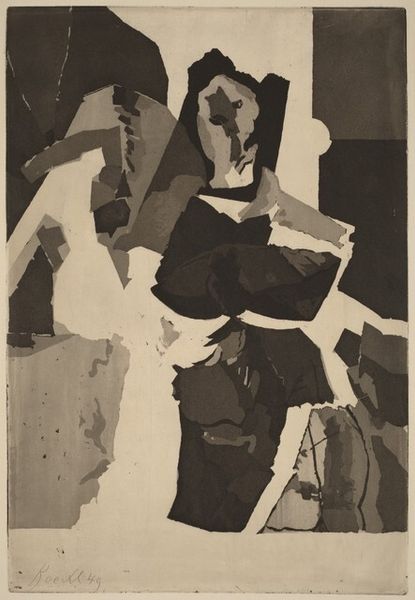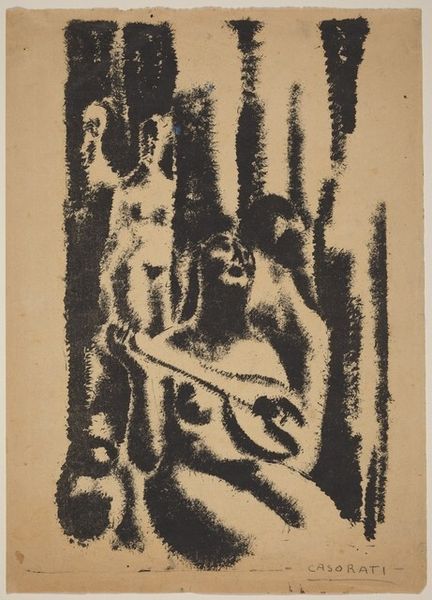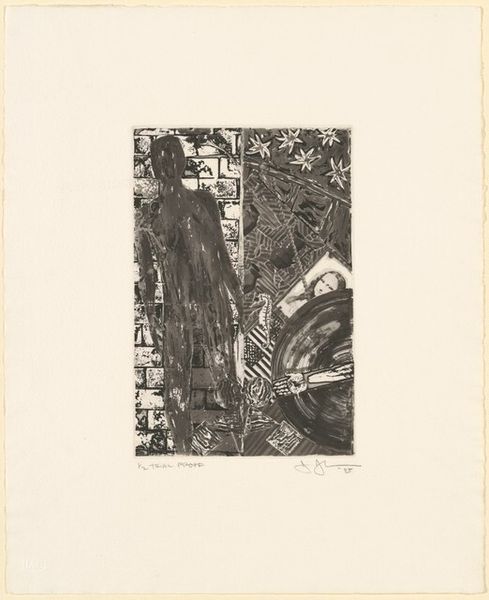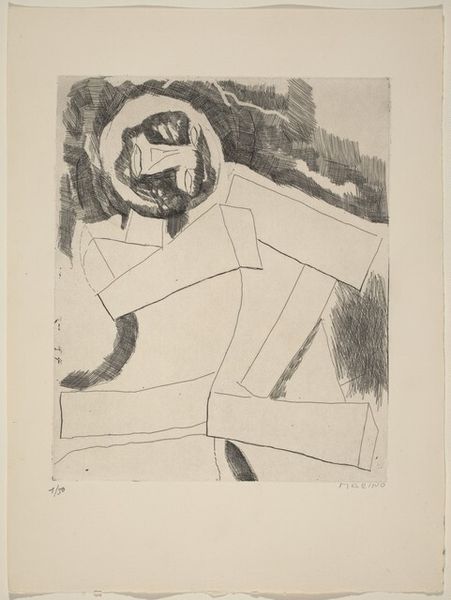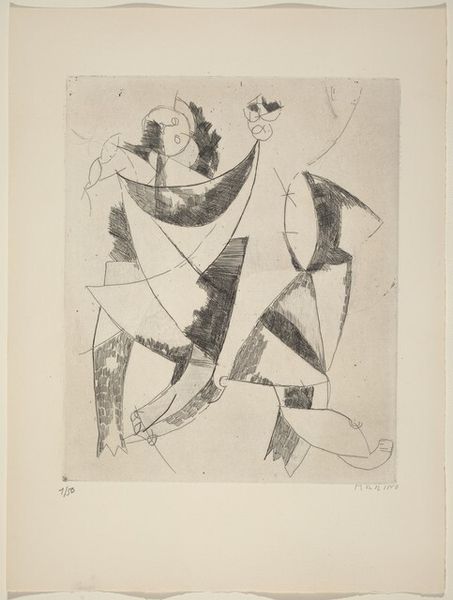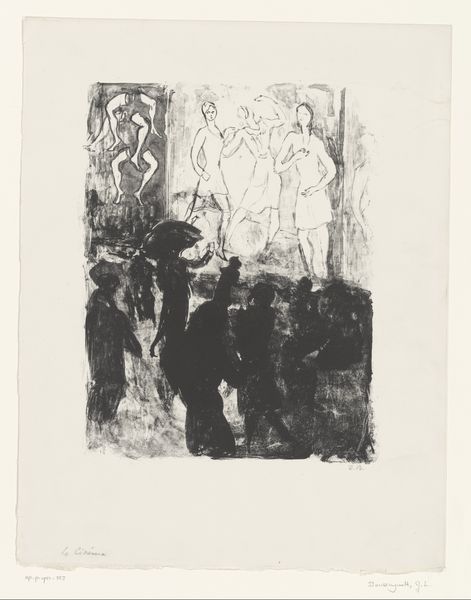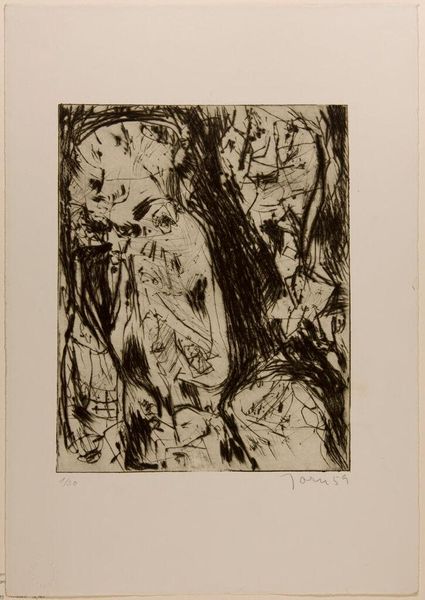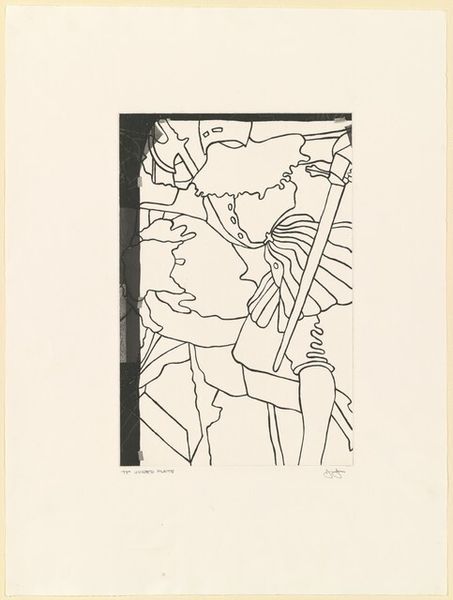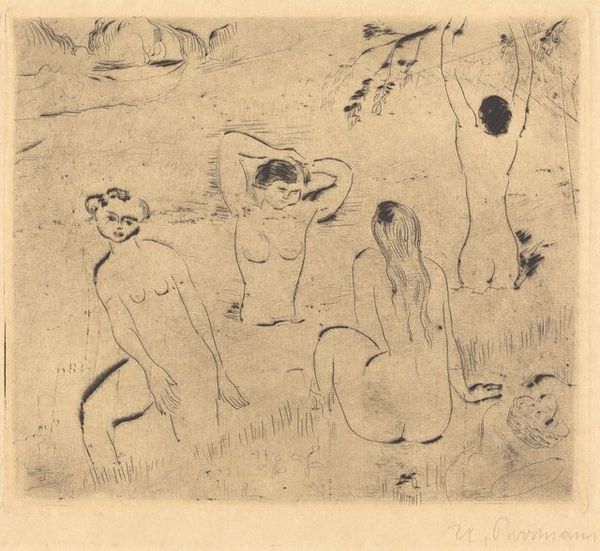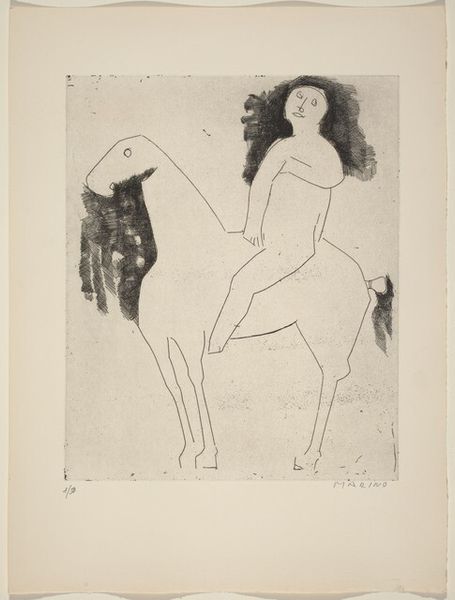
# print
#
figuration
#
modernism
Dimensions: plate: 35.8 x 29.8 cm (14 1/8 x 11 3/4 in.) sheet: 51.8 x 38.7 cm (20 3/8 x 15 1/4 in.)
Copyright: National Gallery of Art: CC0 1.0
Curator: Marino Marini’s print, "Tumblers (Jongleurs)," created in 1956, strikes me immediately as chaotic. What’s your first impression? Editor: The spartan arrangement certainly produces a sense of nervous energy, as if the image is barely being held together. But look how the stark lines articulate motion. It reminds me of circus performers— the acrobats, the horse riders—suspended between control and collapse. Curator: And rendered in print! That choice of medium itself carries meaning. By utilizing a printing process, Marini is able to efficiently produce multiples, engaging with ideas around mechanical reproduction and its role in contemporary society. Editor: Absolutely, this invites exploration into the nature of repetition, each iteration slightly varied, reflecting a live performance. But what about the figures? Those stylized faces—almost mask-like. To me, they resemble ancient Greek theater masks representing comedy and tragedy, reflecting universal human dramas. Curator: It makes me think of labor, actually. The skilled labor of both the performers and Marini. How many prints like these could one make? Where are the sites of artistic creation now as opposed to the fifties? Who consumes them, and how? Editor: True, one has to think of post-war Europe, its reconstructions, the new economies rising on industrial effort. It must have felt imperative to reconnect with ancient virtues. In those circular faces I discern echoes of a past era of art, reminding viewers that humanity shares a cultural history and the need for art's ritual celebration through iconic representation of performance. Curator: To see the making as the performance is also compelling. Perhaps Marini himself, in his studio labor, identified with these tumbling, leaping forms? Thanks for illuminating the iconographic layers for me. Editor: It's crucial to be mindful of those echoes, those cultural touchstones that are part of our collective consciousness. Considering those elements opens more than a history, but something of a future vision too.
Comments
No comments
Be the first to comment and join the conversation on the ultimate creative platform.

